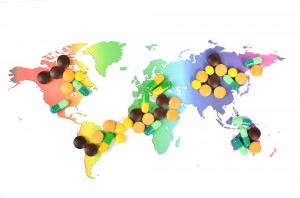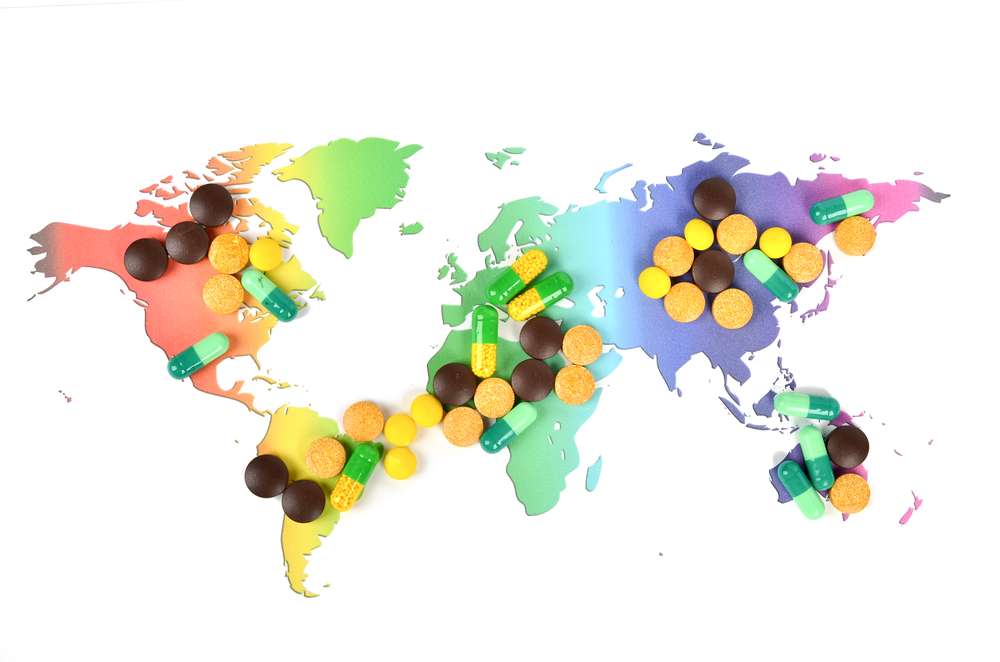 Patients suffering from cancer have different access to drug treatments in different parts of the world, according to two new research projects recently presented at the ESMO 2014 Congress in Madrid, Spain. In particular, Europeans suffering from breast cancer and living in the Eastern part of the continent have the least amount of access to therapy.
Patients suffering from cancer have different access to drug treatments in different parts of the world, according to two new research projects recently presented at the ESMO 2014 Congress in Madrid, Spain. In particular, Europeans suffering from breast cancer and living in the Eastern part of the continent have the least amount of access to therapy.
As an example, a study led by Felipe Ades Moraes from Institut Jules Bordet in Brussels, Belgium revealed that in Eastern Europe, patients have more difficulties in receiving the HER2 positive breast cancer-targeted drug trastuzumab than breast cancer patients in Western Europe and the US, which the author believes relates directly to discrepancies in the survival rate.
“The development of trastuzumab is considered to be one of the greatest improvements in breast cancer treatment in recent years,” explained Ades Moraes about the drug. tTrastuzumab was approved in 1998 and is used for the treatment of patients with breast cancer and HER-2 positive tumors, which account for about 20% of the cases.
“But we found that there were significant differences in trastuzumab procurement between countries in Western Europe, the USA and Eastern Europe and that these differences could be partially related to discrepancies in cancer survival between these regions,” he added. Moraes also found that the supply of trastuzumab within individual countries between 2001 and 2013 was not sufficient for the treatment of all patients that would benefit from it.
On the other hand, Trastuzumab procurement levels increased in Eastern Europe only after 2005, by the time that the drug received extended approval for use after surgery, to increase the cure rate of breast cancer, “while Western Europe and the USA had a faster uptake, seen since the drug’s first approval in the metastatic setting (2000 and 1998, respectively) and acquired sufficient amounts of the drug to treat virtually all patients.”
Moraes’s research also revealed differences in health expenditures between the countries within the European Union, and he concluded that “the more spent, the fewer patients died after a cancer diagnosis.” The researcher also believes that the discrepancies he revealed in the uptake of innovative and life-saving drugs are the reason for the differences in the survival rates.
[adrotate group=”3″]
“Advances in all areas of healthcare, ranging from screening to surgery and radiotherapy, endocrine treatment, and chemotherapy, have all contributed to the decreasing breast cancer mortality trend in the USA and Europe,” the researcher said. “Our demonstration of the higher trastuzumab uptake in countries with higher breast cancer survival strengthens the notion that the uptake of life-saving drugs is one of the many important factors in improving cancer survival.”
Moraes believes that as cancer treatment and cancer drugs become more complex and more expensive, “. . . a close relationship between health authorities and doctors can dramatically improve patient care and cancer survival by determining priorities in health budget allocation.”
In order to estimate the number of new cases of the disease per year, Moraes used data from 24 countries — 14 of them in Western Europe and nine of them in Eastern Europe — as well as the number of treatments conducted with tastuzumab, using trastuzumab procurement data for each country.
The second study, conducted in Toronto, Canada, revealed the geographic discrepancies in access to cancer drugs, with researchers emphasizing that the results are a wake-up call to the emerging necessity for coordination actions between doctors and health authorities on an international scale, to make sure patients receive the best treatments available.
The oncologists present at the Congress underscored the necessity of international coordinated actions in order to promote the approval of new drugs for the treatment of cancer that can reach people in time, since one of the surveys demonstrated that in certain regions, patients wait for years until drugs are approved for clinical use.
However, the lead author of the study, Sunil Verma from Sunnybrook Odette Cancer Center, in Toronto, Canada, noted the importance of the drug approval process in the verification of drugs’ safety and effectiveness.
“Our main aim as clinicians is to ensure that patients are given an opportunity to receive proven, effective and safe treatment in a timely manner. We need to balance due diligence to review appropriate treatment by regulatory agencies and providing treatment to our patients that is effective,” Verma said in an ESMO press release.
Verma and the study’s coauthor, Nardin Samuel, compared the time of drug approval for 41 cancer drugs in Canada, the US, and the European Union, in order to understand the geographic disparities. They concluded that the U.S. Food and Drug Administration (FDA) was approximately six months faster than the European Union’s European Medicines Agency (EMA) and 7.6 months faster than Health Canada.
“There needs to be a dialogue amongst industry, regulatory agencies, patient bodies, research community and oncology professionals on how best we can reduce the time to approval while ensuring safety for approved drugs. We also need a coordinated international approach to reduce the disparity in time to access new drugs around the world,” the researcher added.
This is the first study to systematically compare the time of approval needed for cancer drugs in the three major regulatory institutions. The authors noted that, “while approval from regulatory agencies plays an important part in helping ensure the safety and efficacy of new drugs, delays in the approval process can have an impact on patient care.”

